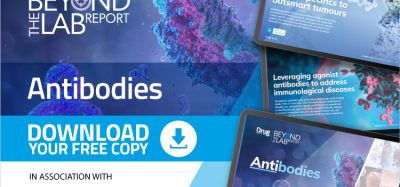Is the Nile rat the new animal model for diabetes research?
Posted: 14 November 2022 | Izzy Wood (Drug Target Review) | No comments yet
US researchers, using genome sequencing, put forward the Nile rat as the new model organism for diabetes research.


Morgridge Institute for Research, US, researchers have provided a high-quality reference genome assembly for the Nile rat, expanding its potential as a model organism for diabetes research.
Model organisms are essential for biomedical research and have enabled many important scientific discoveries. The ability to sequence the genomes of these models is a powerful tool to study the genetic factors that impact human health.
The research published in BMC Biology, found that although the house mouse and Norway rat are widely used in research due to their genetic similarities to humans, it is the Arvicanthis niloticus, the Nile rat, that is rising through the ranks.
The Nile rat serves as an alternative model in two research areas where lab mice and rats have limitations: type 2 diabetes and disorders associated with a disrupted circadian rhythm.
“There is still room for a lot of discovery in type 2 diabetes, with questions that are difficult to answer. That is why we thought that maybe it is time to take a risk on a newer animal model,” said Huishi Toh, an assistant project scientist at the University of California Santa Barbara. “We also know that epigenetics is really important — the environment crossing with the genetic components — so we have to study both. That is why we require a very high-quality genome to allow the ability to do that.”
The technology to produce a complete and highly accurate genome sequence is relatively new. Typically, to sequence a large genome, the DNA sequence needs to be chopped into shorter lengths between 100 to 300 nucleotides and then reassembled into longer contiguous sequences (contigs). However, this approach tends to leave lots of gaps.
“An important genome quality measure is what is the length of an average contig. Basically, the longer it is, the fewer gaps you have,” commented Yury Bukhman, a computational biologist in the Stewart Computational Biology Group at Morgridge. “Ours is one of the longest.”
The research team applied long-read sequencing technology to assemble longer contigs from reads of around 10,000 to 20,000 nucleotides in length. They also used multiple additional technologies to join contigs together into scaffolds that run the length of a chromosome. Finally, they were able to fully resolve two copies of the genome: the one that the sequenced individual inherited from its mother and the one from its father.
The team analysed their Nile rat sequence through a database called benchmarking universal single copy orthologs (BUSCO), which provides a set of genes commonly found in the phylogenetic group of interest, in this case rodents.
“We are basically in the same league as the other rodent model organisms,” said Bukhman. “We find complete sequences of 99 percent of BUSCO genes, so we are not missing a lot of protein coding sequence.”
With a high-quality sequence in hand, the researchers looked for patterns in the genome, such as genes that have different number of copies in Nile rat compared to house mouse, that could be candidates for future study.
Now that the Nile rat has a high-quality reference genome, Bukhman and Toh both hope that the species will become more widely used in biomedical research.
“People are resistant to using new animal models, because it is a lot of money, a lot of effort and a lot of risk,” concluded Toh. “But we decided to take the unconventional route. In research, I think, to survive is to find different flavours, different trajectories. And we have removed some of that risk.”
Related topics
Animal Models, Genomics, Sequencing, Targets
Related conditions
Type-2 diabetes
Related organisations
California University, Morgridge Institute for Research
Related people
Huishi Toh, Yury Bukhman







